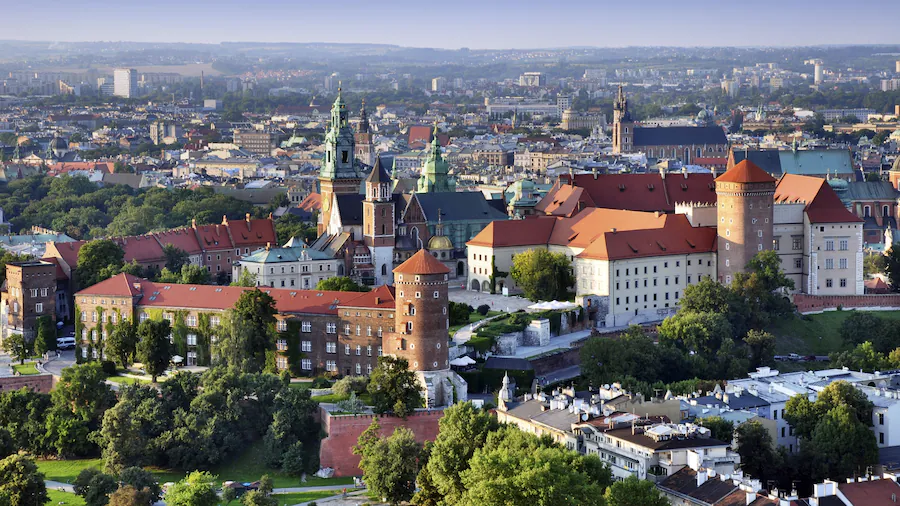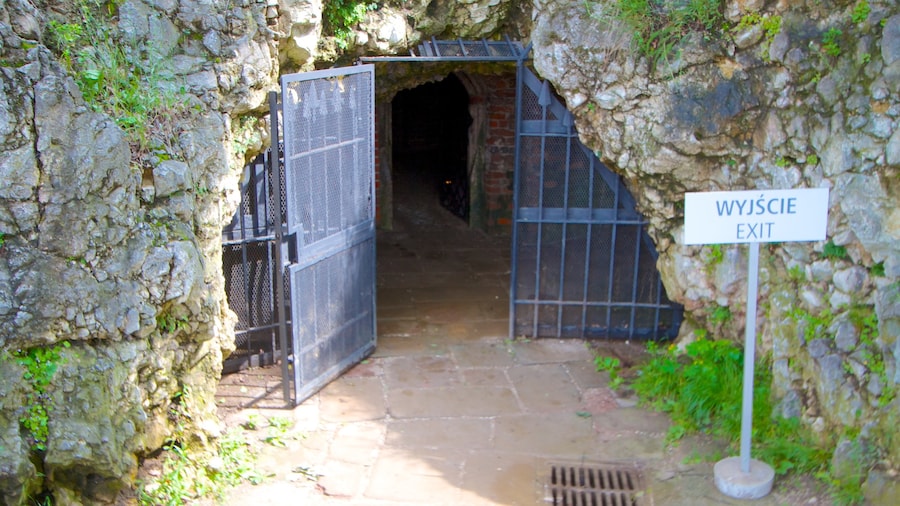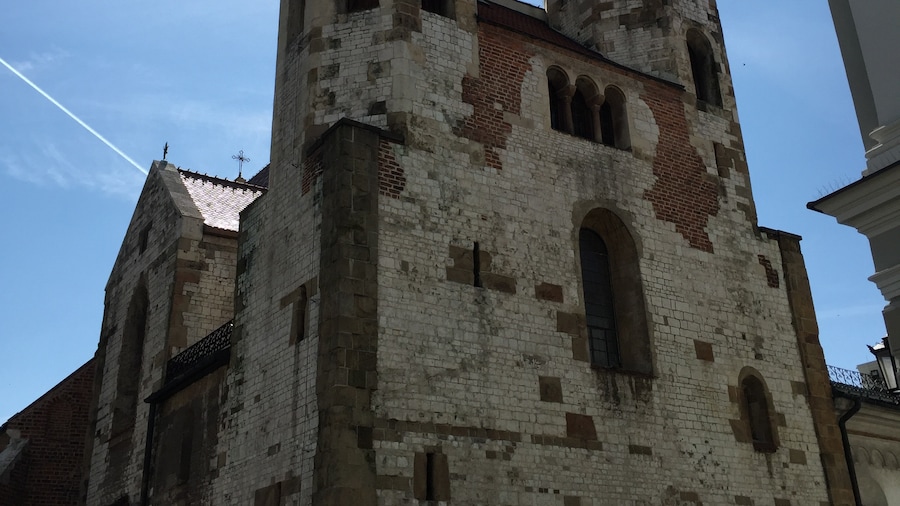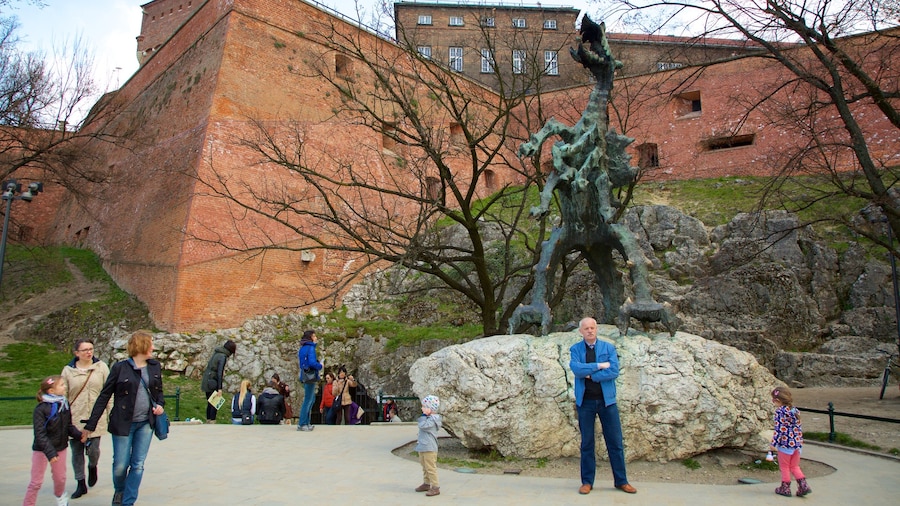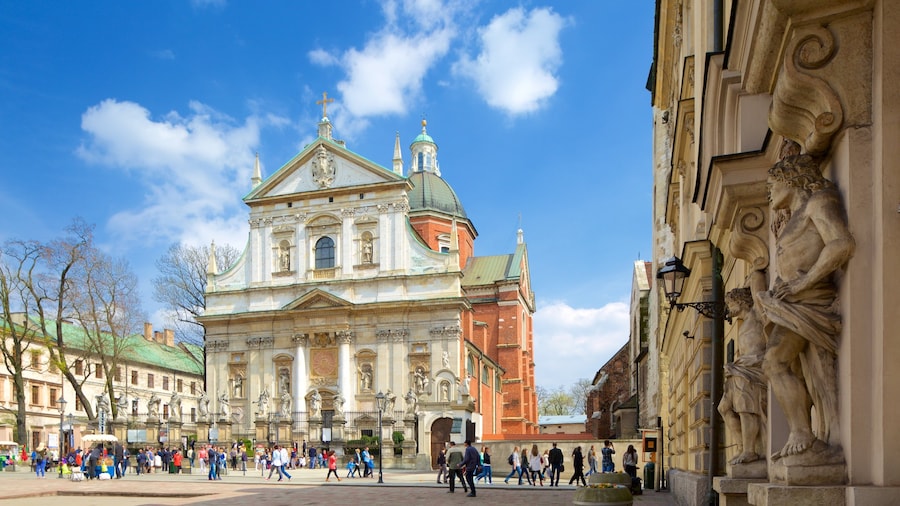바벨성당의 지기스문트 예배당 꼭대기의 황금빛 돔 천장을 올려다 보세요. 이곳에서 볼 수 있는 회화와 조각과 치장 벽토는 유럽에서도 손에 꼽히는 르네상스 예술 작품입니다. 성당의 다른 예배당에서는 폴란드 역대 왕들의 정교한 무덤을 감상하세요. 종탑에 오르면 유명한 지기스문트 종을 볼 수 있습니다.
로마 가톨릭 성당인 바벨성당은 1364년에 건립되었습니다. 이곳은 오늘날 폴란드에서 가장 중요하게 여겨지는 종교 건물입니다. 수많은 역대 폴란드 왕들의 대관식이 거행되었던 이곳에는 45명의 역대 폴란드 왕들 중 네 명을 제외한 이들이 잠들어 있습니다.
입구에 들어서면 블라디슬라브 2세의 붉은 대리석 석관이 눈길을 끕니다. 흰색 대��리석과 사암, 각종 보석으로 제작된 다른 무덤도 볼 수 있습니다.
여러 예배당을 돌아보며 바로크, 고딕 및 르네상스 시대의 예술 작품을 감상하세요. 성십자 예배당에는 15세기의 스테인드글래스 창과 러시아 벽화가 보존되어 있습니다. 지기스문트 예배당에서 게오르그 펜츠, 산티 구치, 헤르만 피셔 등 르네상스 시대 거장들의 예술 작품을 감상하세요.
예배당 중앙 제단의 흑색 대리석 아래에 모셔져 있는 성 스타니슬라오의 은색 무덤도 놓치지 마세요. 무덤을 둘러싸고 있는 벽은 성인의 삶과 사후 기적을 그리고 있는 부조로 장식되어 있습니다.
종탑에 올라 지기스문트 종을 감상하세요. 1520년에 제작된 이 종은 국가의 중요한 축일에만 울린다고 합니다. 종소리를 들을 수는 없어도, 원한다면 손을 뻗어 만져볼 수는 있습니다.
바벨성당은 바벨 성 영지 내에 위치하고 있습니다. 크라쿠프 구시가에서 남쪽을 향해 걸어가거나, 버스나 트램을 이용하세요. 성당은 입장료가 무료입니다. 매일 문을 열고, 매주 일요일에는 일찍 문을 닫습니다. 공휴일과 국가 행사일에는 문을 닫습니다. 박물관에 입장하거나 종이나 무덤을 둘러보려면 소액의 입장료가 부과됩니다.





